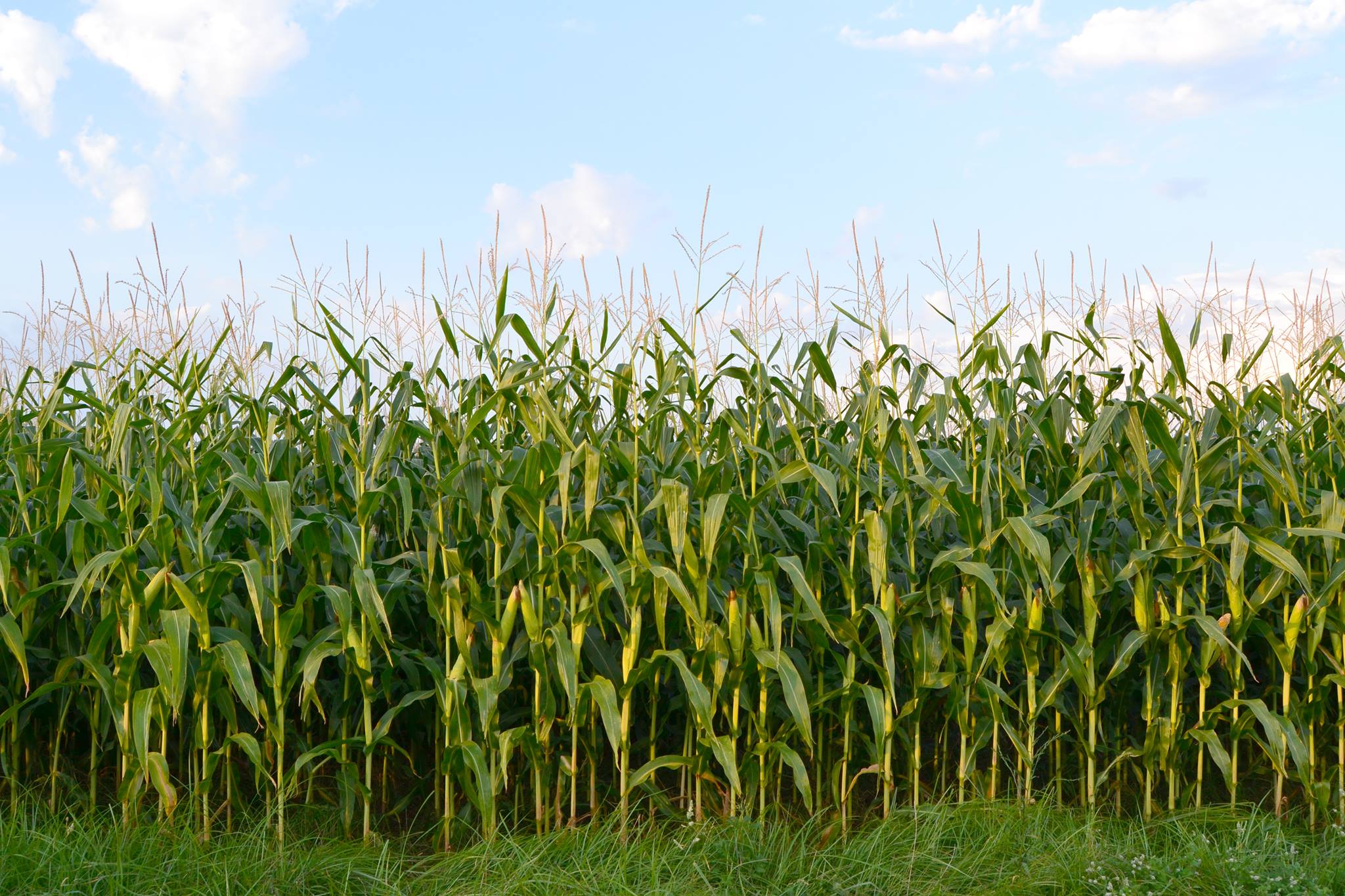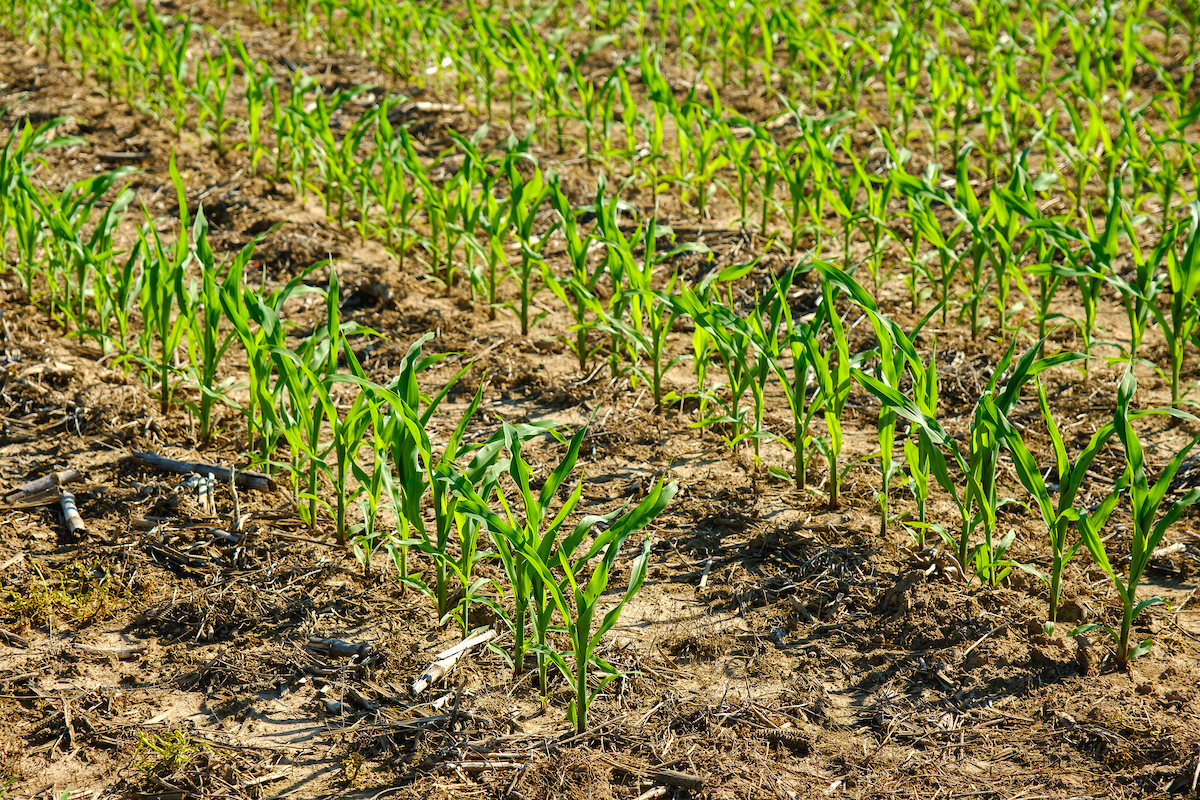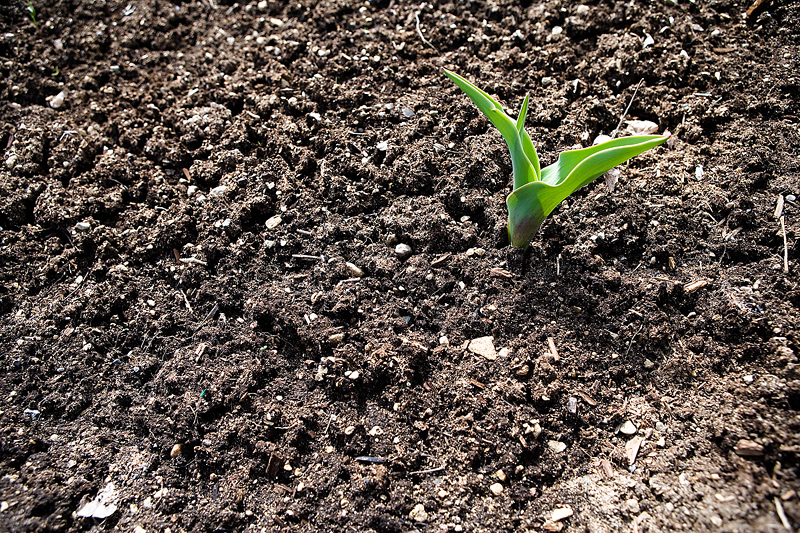Determining the nutrient value of different nutrient packages
Determining the nutrient value of different nutrient packages

Plant nutrients, i.e. fertilizers, come in different forms (dry/liquid) and many different analyses. Some products contain macronutrients only, like 19-19-19, 18-46-0, 10-34-0, others might contain only micronutrients, and others have a mixture of both macro- and micronutrients. Sometimes fertilizer packages make sense to use while at other times might not be the best approach, especially if only a portion of the nutrients contained in the package is needed.
A complete fertilizer is defined as a fertilizer that contains N-P-K fertilizer. A good example of a complete fertilizer is 19-19-19. Each 100 lb of fertilizer contains 19 lb of N, P2O5 and K2O. This type of fertilizer is often used by homeowners when a small area needs to be fertilized and usually when a soil test has not been done. A common fertilizer practice historically used for corn production in Kentucky is application of 200 lb/acre of 9-23-30, a 50/50 mixture of DAP (18-46-0) and KCl (0-0-60). Another common complete fertilizer source is animal manure as it also contains all three primary macronutrients N, P and K.
The problem with using these fertilizer “packages” is that achieving the proper rate is hard. For example, assume a soil test recommendation calls for 50 lb P2O5/acre and 50 lb K2O/acre. Achieving the desired rate with 19-19-19 would require 263 lb 19-19-19/acre. What if the crop was going to be soybean, rather than corn? Would the soybean need 50 lb N/acre? Probably not. This is an example of an unnecessary expense that results from a “nutrient package”. Now, what if we are trying to reach the same 50 lb/acre rate using 9-23-30? We could target the P2O5 and apply 217 lb 9-23-30/acre to get 50 lb P2O5/acre but would over apply the K2O by 15 lb/acre (217 x 0.30 = 65 lb K2O/acre). If we targeted the K2O we would add 167 lb/A but under apply P2O5 by 12 lb/acre (167 x 0.23 = 38 P2O5/acre). Neither of these scenarios make good economic or agronomic sense, especially during the current conditions of low commodity prices, coupled with high input prices.
The above was a simple exercise to show how common “nutrient packages” typically aren’t the best approach to meeting your crop’s fertility needs. Now let’s take this concept a step further by examining micronutrient packages or packages that contain both macro- and micronutrients. Most micronutrient packages contain some macronutrients like N, P or possibly sulfur (S), and then some ‘suite’ of micronutrients at various concentrations. Most of the use rates are very low, less than 4 quarts/acre/application for soil applications and 1-2 qt/acre for foliar application.
Let’s do some quick math using a 2 qt/acre rate and an 11 lb/gal product density. Using a product containing 5% N, 3% S, 0.25% boron (B), 3% manganese (Mn) and 3% zinc (Zn) will result in nutrient application rates of about 0.28 lb N, 0.17 lb S, 0.03 lb B, 0.33 lb Mn and 0.33 lb Zn per acre. This product probably is produced with high grade materials, likely flows well in a spray assuming there are no antagonisms with other materials in the mix, and meets the minimum label analysis. Just because this is a “good product”, the chances that the N and S would cause a meaningful nutrition benefit is very small at these use rates. A decent corn crop will remove well over 100 lb N/acre and 15 lb S/acre in the grain and take up more during the growing season. Adding a fraction of a pound will not influence the overall N or S status of the soil, even with several applications. However, the micronutrients B, Mn and Zn might be a different story as the crop’s need for these is magnitudes lower than that for the macronutrients. If a crop needs B, Mn and Zn, does this “package” meet the requirements for each micronutrient? Are we paying for something we don’t need or not getting the proper amount of a specific needed nutrient? Make sure the product contains a sufficient amount of the needed nutrients and calculate the cost per acre of the nutrient when comparing products to purchase.
Here is example of another product that contains B, calcium (Ca – a macronutrient), cobalt (Co), copper (Cu), iron (Fe), magnesium (Mg), Mn, molybdenum (Mo), nickel (Ni) and Zn. The chances that a soil is deficient in all these nutrients is extremely rare, especially in Kentucky. There have been no or extremely limited documented responses to Co, Cu, Fe, and Ni for row crops in Kentucky. Responses to Mg, Mn, and Mo are far less common than responses to Zn in Kentucky and are usually crop specific. Further, soil test Ca levels in managed agricultural fields are typically found to be over 2,000 lb/acre and values over 4,000 lb/acre are not uncommon. This product is an example of paying for a lot of nutrients that either are not needed or supplied in insufficient amounts if the application rate is too low.
Returning to a nutrient package commonly used in western Kentucky, animal manure, specifically poultry litter (PL). The nutrient content of PL can and does vary considerably. This means the PL user should be sure to sample the PL and get nutrient contents determined so you know what you are applying. Once PL nutrient content is known, how is it best used? As with the original example starting this newsletter, it is hard to meet the nutrient demands for all nutrients when using a complete fertilizer. That doesn’t mean you should not use it but do use PL in the most efficient manner. When applying PL, the most economical application will be when a field needs N, P and K. This will usually mean that corn would receive the greatest benefit from the application as compared to soybean, which doesn’t require supplemental N. Fields with historical hay production are also good options for PL applications as they often require N, P, and K. The full value of PL and all complete fertilizers will not be realized if it is being applied to correct a deficiency in only one nutrient. Price the nutrient value of PL according to what other fertilizer sources can be purchased for. If it is cheaper to buy DAP and KCl than PL, then don’t buy PL for your nutrient source. There are multiple calculators available to compare the nutrient value of different products. Two examples can be found at the following links: https://agecon.mgcafe.uky.edu/dt/economic-value-poultry-litter-tool-grain-crops and Calculators for Recommendations based on a soil test.
In closing, micronutrient packages are typically the highest profit-generating products for the industry. They are often good products, but only good for you if they supply needed nutrients at the best price and you can avoid paying for unneeded nutrient components. Like PL, they are a very good nutrient source for row crop fertility programs only when they are economically equivalent or better than alternative products. The bottom line is that product comparisons should be made on price per unit of nutrient, not price per acre of a product. Ten dollars saved per acre is $10 earned per acre, especially in the upcoming growing season.
| Citation: Ritchey, E., Grove, J., 2025. Determining the Value of Different Nutrient Packages. Kentucky Field Crops News, Vol 1, Issue 10. University of Kentucky, October 10, 2025. |

|

|


